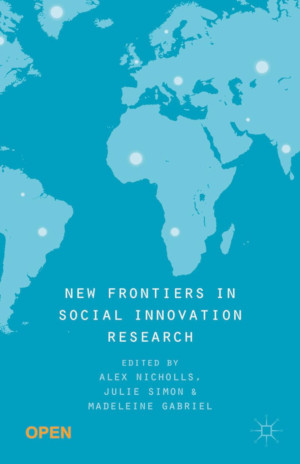Collaboration for Impact
Lessons from the Field
by John Butcher, David Gilchrist
DescriptionTable of ContentsDetailsHashtagsReport an issue
The road to collaboration is paved with good intentions. But, as John Butcher and David Gilchrist reveal, 'good intentions' are not enough to ensure well-designed, effective and sustainable collaborative action. Contemporary policy-makers and policy practitioners agree that 'wicked' problems in public policy require collaborative approaches, especially when those problems straddle sectoral, institutional, organisational and jurisdictional boundaries.
The authors set out to uncover the core ingredients of good collaboration practice by talking directly to the very people that are engaged in collaborative action. This book applies the insights drawn from conversations with those engaged in collaborations for social purpose - including chief executives, senior managers and frontline workers - to the collaboration challenge. Backed up by an extensive review of the collaboration literature, Butcher and Gilchrist translate their observations into concrete guidance for collaborative practice. The unique value in this book is the authors' combination of scholarly work with practical suggestions for current and prospective collaborators. 






Book Description
Collaboration is often seen as a palliative for the many wicked problems challenging our communities. These problems affect some of the most vulnerable and unempowered people in our community. They also carry significant implications for policy processes, programs of service and, ultimately, the budgets and resourcing of national and sub-national governments.The road to collaboration is paved with good intentions. But, as John Butcher and David Gilchrist reveal, 'good intentions' are not enough to ensure well-designed, effective and sustainable collaborative action. Contemporary policy-makers and policy practitioners agree that 'wicked' problems in public policy require collaborative approaches, especially when those problems straddle sectoral, institutional, organisational and jurisdictional boundaries.
The authors set out to uncover the core ingredients of good collaboration practice by talking directly to the very people that are engaged in collaborative action. This book applies the insights drawn from conversations with those engaged in collaborations for social purpose - including chief executives, senior managers and frontline workers - to the collaboration challenge. Backed up by an extensive review of the collaboration literature, Butcher and Gilchrist translate their observations into concrete guidance for collaborative practice. The unique value in this book is the authors' combination of scholarly work with practical suggestions for current and prospective collaborators.
This open book is licensed under a Creative Commons License (CC BY-NC-ND). You can download Collaboration for Impact ebook for free in PDF format (8.1 MB).
Table of Contents
Chapter 1
Introduction
Chapter 2
A new business as usual
Chapter 3
Designing impactful collaboration
Chapter 4
Collaborative intelligence and organisational intelligence
Chapter 5
Designing the collaboration and its operational framework
Chapter 6
Authorisation, governance and assurance
Chapter 7
Leading collaboration
Chapter 8
Engagement
Chapter 9
Enabling place-based solutions
Chapter 10
Earning trust, credibility and legitimacy
Chapter 11
Conclusion: Are we collaborating yet?
Book Details
Title
Collaboration for Impact
Publisher
ANU Press
Published
2020
Pages
250
Edition
1
Language
English
ISBN13
9781760463960
ISBN10
1760463965
ISBN13 Digital
9781760463977
ISBN10 Digital
1760463973
PDF Size
8.1 MB
License

Related Books

In the light of better and more detailed administrative databases, this book provides statistical tools for evaluating the effects of public policies advocated by governments and public institutions. Experts from academia, national statistics offices and various research centers present modern econometric methods for an efficient data-driven policy...

This book written by international experts in the field of educational innovation is a guide for universities to become world-class universities. It contributes to the current international intellectual debate on the future of higher education. It also tells the story of King Abdulaziz University in Jeddah (Saudi Arabia) and its effort to become a ...

This open book describes the serious threat of invasive species to native ecosystems. Invasive species have caused and will continue to cause enormous ecological and economic damage with ever increasing world trade. This multi-disciplinary book, written by over 100 national experts, presents the latest research on a wide range of natural science an...

This book offers a devastating look at deeply flawed development processes driven by international finance, African governments and the global consulting industry. It examines major river basin development underway in the semi-arid borderlands of Ethiopia, Kenya and South Sudan and its disastrous human rights consequences for a half-million indigen...

The result of a workshop bringing together an international advisory board of experts in science, satellite technologies, industry innovations, and public policy, this book addresses the current and future roles of satellite Earth observations in solving large-scale environmental problems. The book showcases the results of engaging distinct communi...

Interest in social innovation continues to rise, from governments setting up social innovation 'labs' to large corporations developing social innovation strategies. Yet theory lags behind practice, and this hampers our ability to understand social innovation and make the most of its potential. This collection brings together work by leadi...

